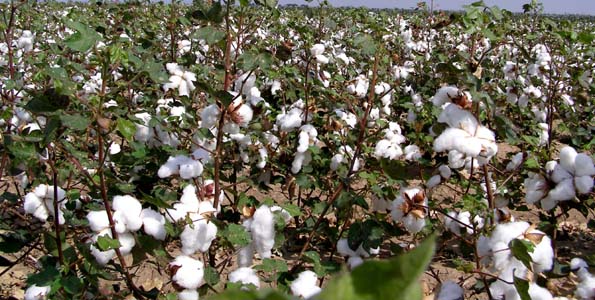
By George Munene
Just nine months after the approval of the growing of the genetically modified BT cotton, its cultivation, coupled with government and private investment in reviving local ginneries is already having profound effects in improving the fortunes of Kenyan cotton farmers.
In the 2020-2021 financial year, the Kenyan government allocated Sh200 million to revitalize the country’s cotton sector. This was months after the reopening and upgrading of defunct Rivatex East Africa last year. The Eldoret based cotton mill now boasts modern cotton refining machinery and has won contracts to produce materials for police uniforms and other state agencies. The ginnery has also had its mills churning in mass production of up to 80,000 facemasks daily.
In Busia County, the government has committed Sh30M to revive Mulwanda ginnery after issuing more than 3,000 farmers with the BT hybrid cotton
Private players such as Thika Cloths Mill are also contracting farmers in semi-arid regions of Makueni County, luring them with free seeds and inputs.
BT cotton has a yield potential of 1.4 tons per acre double that of conventional cultivars such as Hart89M which tops out at 700 kilograms.
Conventional cotton varieties such as Hart 89M, KSA 81M, F962, Sicala v-1, Ny (72) 26 and Vered presented a myriad of challenges that made their production costs prove untenable for farmers.
BT cotton has a germination rate of over 90% with almost no cases of flower abortions meaning it archives up to 80 balls for every plant. Conventional varieties have a germination success percentage of 40-45%. For previous cotton varieties, farmers had to sow more than a seed per hole to be assured of one sprouting; with the improved BT cotton, the seed rate is only one a hole. It is pest-resistant; little affected by diseases and pests such as cotton stainers, African Bollworm and Cotton Semi-looper. This makes it whiter, achieving an AR grade, which means farmers fetch a better price for their produce. Habitual spraying— up to five times before its maturity— done for conventional cotton meant its cultivation was tedious and costly making it difficult for farmers to break even, BT farmers report having to spray just once or twice at a push. The improved hybrid cotton is also drought resistant.
Related News: Farmers to start planting pest resistant GM cotton next year
Related News: Makueni farmers set to up cotton production with new variety
In its heyday in 1984/1985 cotton was one of Kenya’s main foreign exchange earners with the country producing 38,000 metric tonnes of cotton. With the liberalization of the cotton sector in 1995 and the withdrawal of government-subsidized inputs as well as credit, cotton farming in Kenya collapsed leading many growers to abandon the crop.
“Kenya produces just 29.000 bales a year, we project this to increase to 200,000 bales by the end of 2020,” said the CAS for Agriculture, Annie Nyanga, She was speaking at the flagging of 16 metric tons of hybrid BT cotton seeds distributed to farmers across 12 counties for free in April, 2020 to woo back farmers to cotton growing. Kenya has a yearly market demand of 140,000 bales, a deficit that is bridged through imports from Tanzania and Ugandan. With local farmers able to produce more cotton per acre than they ever have and a promise of a consistent market as cotton ginneries rev back up across the country, the nation is well on its ways to becoming cotton self-sufficient in the coming years.
Related News: Rivatex East Africa Limited revives cotton farming in Kericho County
According to cotton-growing experts, for farmers to earn returns from BT cotton they need to cultivate on over an acre. This will enable them to cover their cost of production and earn a return. Intercropping is dissuaded as this might introduce pests to your cotton crop, though this can be mitigated through the use of selective herbicides. Cotton should be planted at the onset of rains for vigorous growth at its germination.
Mahyco Seed Company charged with the distribution of BT cotton seeds in the country Is working with KALRO to build the capacity of farmers to enable them to produce the seeds locally.
















Comments powered by CComment